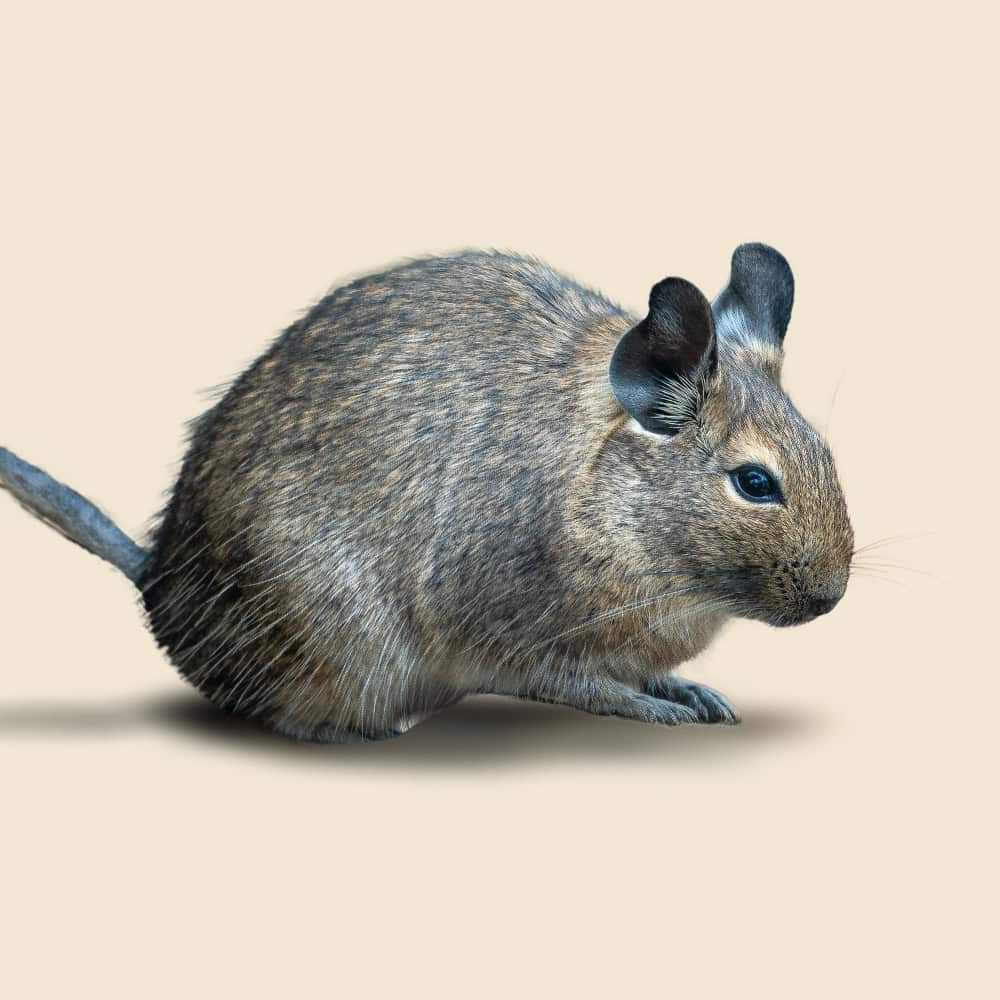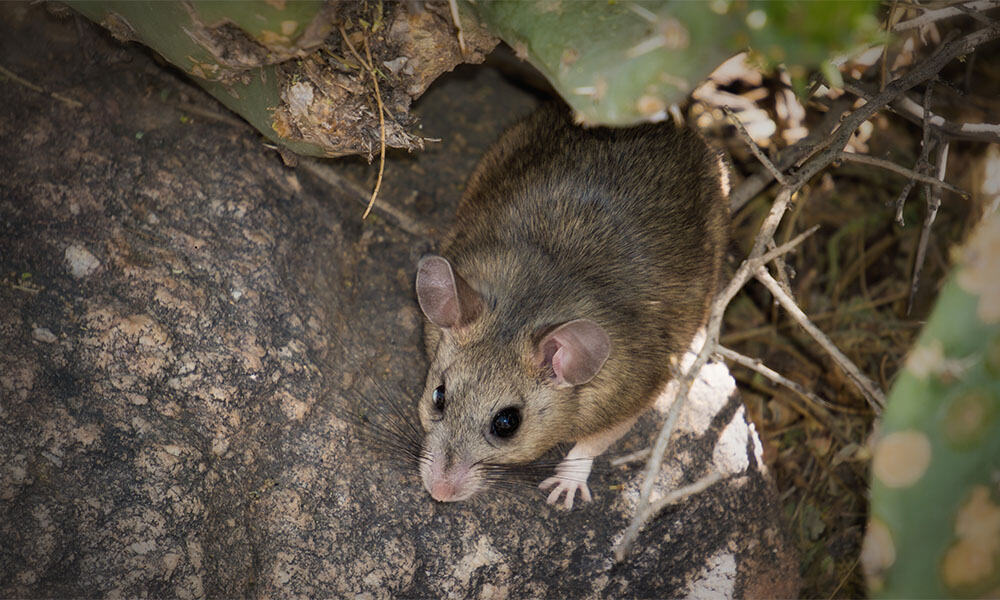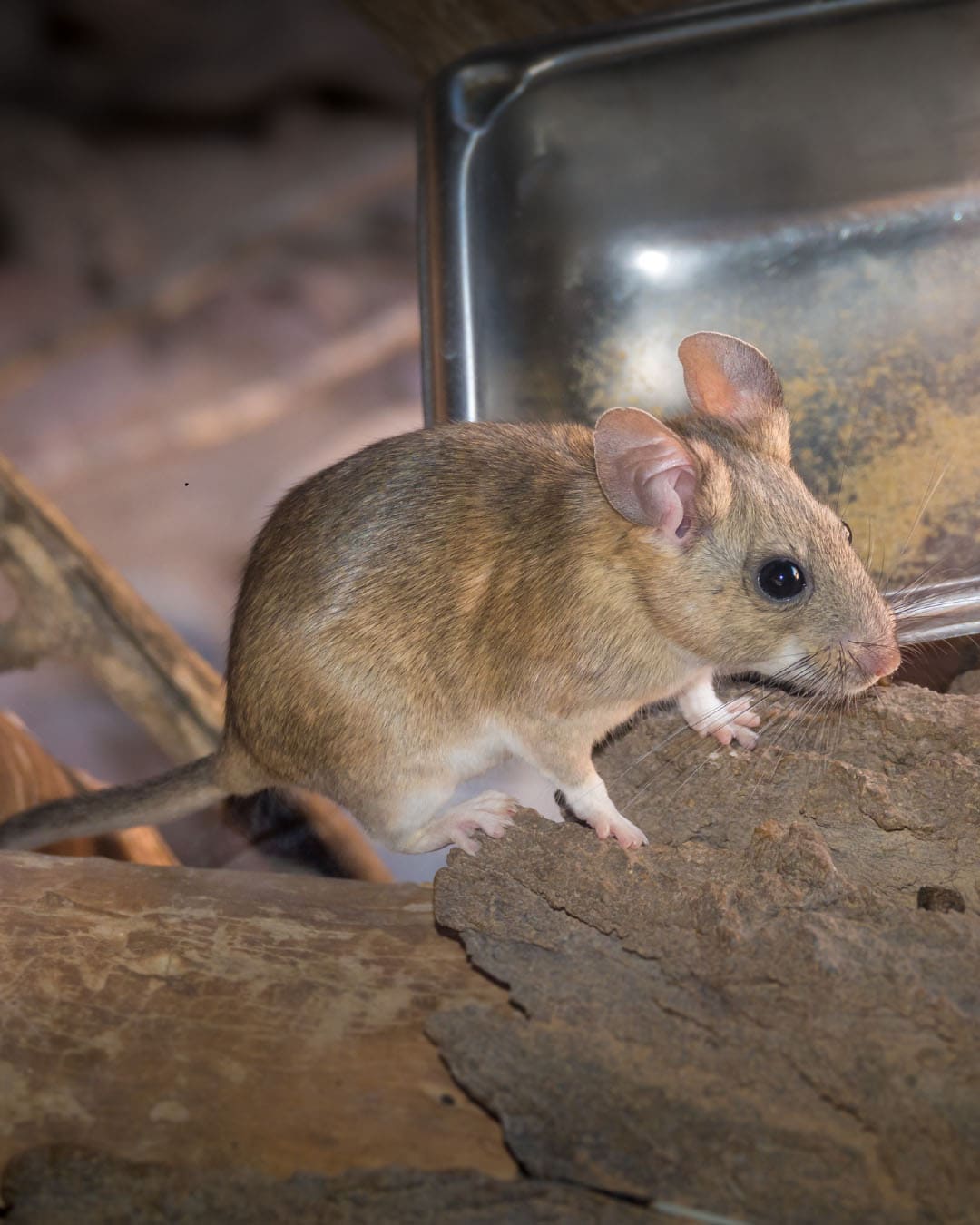Big Eared Woodrat Facts & Information
Big eared woodrats, also known as packrats or trade rats, can be a concern for homeowners due to their nesting habits and potential for property damage. While they play a role in the ecosystem by dispersing seeds and creating habitat for other animals, their presence in and around homes can lead to conflicts.

Neotoma macrotis
What You Need To Know About Big Eared Woodrats
What do woodrats look like?
Woodrats, also known as packrats, are medium-sized rodents measuring 7 to 8 inches in body length, with tails that can add another 6 to 8 inches. They have large ears, prominent eyes, and soft, grayish-brown fur with a lighter underside. Their tails are furry, unlike the hairless tails of common rats.
What do woodrats eat?
Woodrats are herbivores, feeding primarily on plant materials such as leaves, seeds, fruits, nuts, and bark. They have a special fondness for prickly pear cacti and will also gather and store food in their nests for later consumption.
What sort of habitat do woodrats live in?
Woodrats prefer rocky outcrops, forests, and desert environments, depending on the species. They are known for building large nests, called “middens,” out of twigs, leaves, and other debris, which they gather and stack in sheltered areas like caves, crevices, or under trees.
How do woodrats commonly behave?
Woodrats are nocturnal and solitary creatures, spending most of their time gathering materials to build and fortify their nests. They are known for their “packrat” behavior, where they collect shiny or interesting objects and incorporate them into their nests. Woodrats are territorial and mark their homes with urine to ward off intruders.
Did you know this about woodrats?
Woodrat nests, or middens, can last for centuries, with some discovered to be thousands of years old! These ancient nests, preserved in arid environments, have provided valuable insights into the environmental history of the regions they are found in. Additionally, woodrats have an interesting habit of swapping objects—if they find something more interesting than what they are carrying, they will often leave their original item behind in exchange.
Understanding Big Eared Woodrat Infestations
Understanding big-eared woodrat infestations is crucial for effective management. These rodents are known for building elaborate nests, often using a variety of materials, including sticks, leaves, and debris. They are attracted to cluttered or unkempt outdoor spaces and may seek shelter in sheds, garages, or attics, potentially causing damage to stored items and structures.

How Hearts Handles Big Eared Woodrat Treatment
Hearts Pest Management employs an integrated pest management approach to handle big-eared woodrat infestations. Our process begins with a thorough inspection to identify entry points and nesting sites. We then develop a customized treatment plan that may include exclusion methods, trapping, and rodent-proofing techniques, ensuring the safety of your home and family.
Big Eared Woodrats Inspection
Big Eared Woodrats Treatment
Big Eared Woodrats Prevention
Educational Resources

Think You Might Have a Big Eared Woodrat Infestation?
At Hearts Pest Control, we understand the challenges associated with Big Eared Woodrat infestations and are here to provide professional solutions tailored to your needs. Flourishing in warm and humid climates, they are prevalent in many regions, including San Diego County, Orange County, and Los Angeles County.